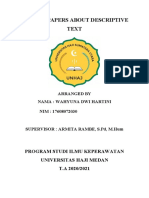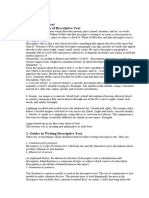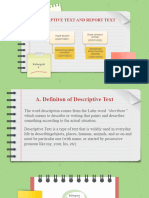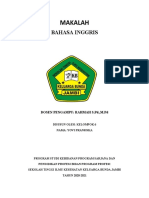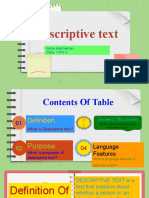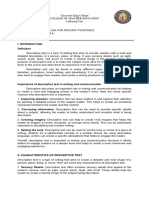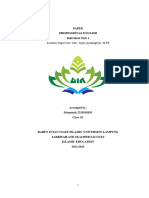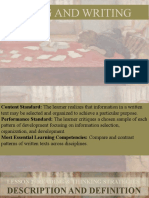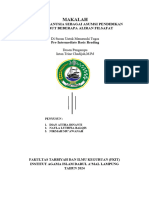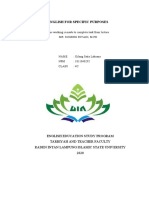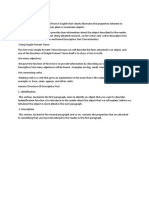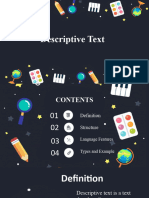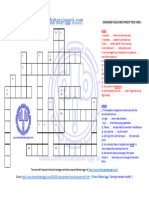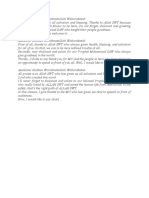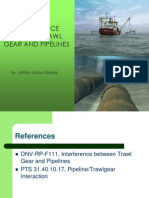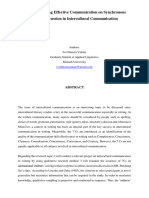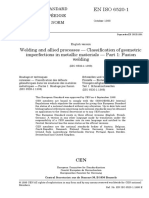0% found this document useful (0 votes)
32 views10 pagesDESCRIPTIVE
The document discusses the concepts, purpose, criteria, language features, and generic structure of descriptive text. Specifically:
1) Descriptive text describes people, objects, animals, or other things and appeals to the senses by describing how something looks, feels, smells, tastes, and sounds.
2) The purpose of descriptive text is to present objective descriptions to specific audiences and help readers visualize what is being described by explaining, persuading, or recreating experiences.
3) Good descriptive text uses specific details and space order from top to bottom or left to right.
4) Language features include using present tense, adjectives, adverbs, and thematically linked sentences and paragraphs.
Uploaded by
Smk KespnCopyright
© © All Rights Reserved
We take content rights seriously. If you suspect this is your content, claim it here.
Available Formats
Download as PDF, TXT or read online on Scribd
0% found this document useful (0 votes)
32 views10 pagesDESCRIPTIVE
The document discusses the concepts, purpose, criteria, language features, and generic structure of descriptive text. Specifically:
1) Descriptive text describes people, objects, animals, or other things and appeals to the senses by describing how something looks, feels, smells, tastes, and sounds.
2) The purpose of descriptive text is to present objective descriptions to specific audiences and help readers visualize what is being described by explaining, persuading, or recreating experiences.
3) Good descriptive text uses specific details and space order from top to bottom or left to right.
4) Language features include using present tense, adjectives, adverbs, and thematically linked sentences and paragraphs.
Uploaded by
Smk KespnCopyright
© © All Rights Reserved
We take content rights seriously. If you suspect this is your content, claim it here.
Available Formats
Download as PDF, TXT or read online on Scribd
/ 10





